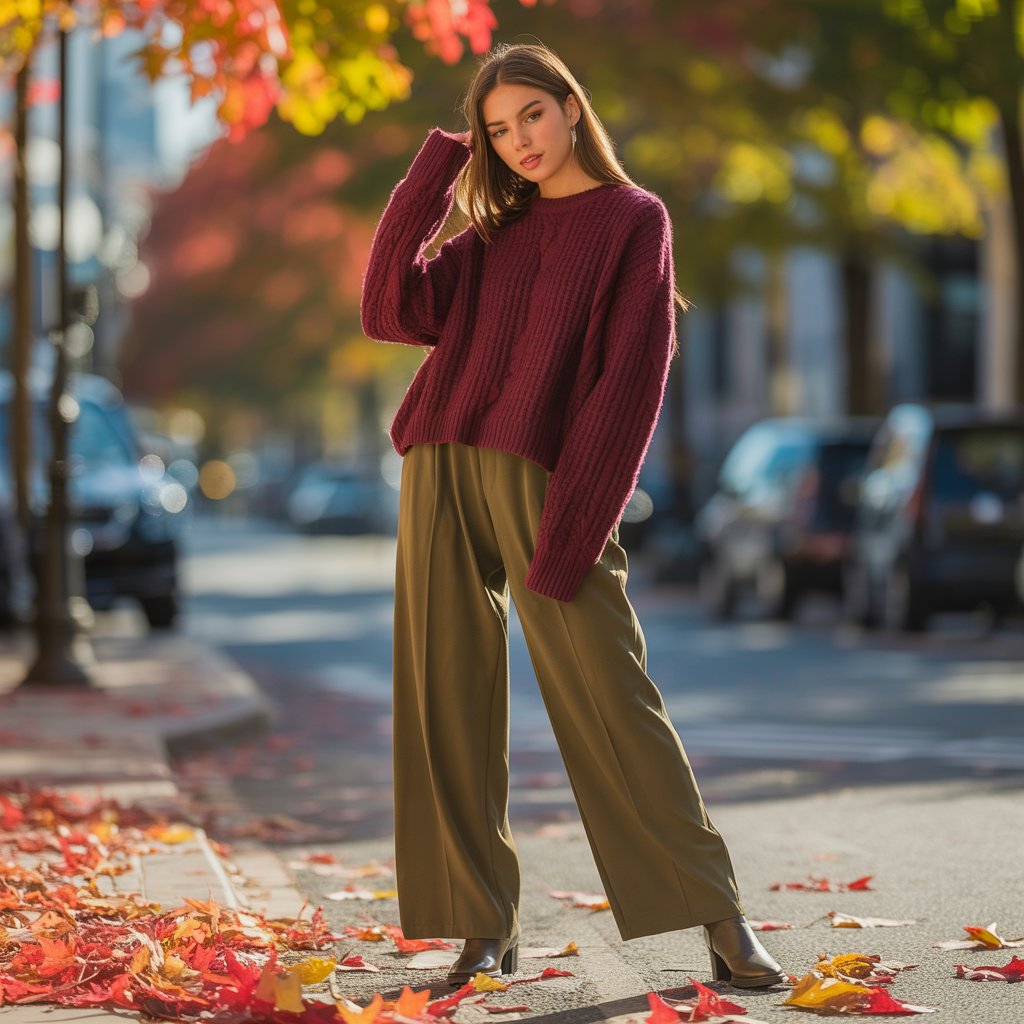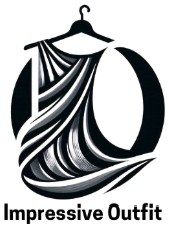As a fashion designer who’s spent the past decade working closely with American consumers through my design studio in New York City, I’ve witnessed how seasonal trends can either empower or overwhelm. Many clients come to me frustrated by the endless “must-have” lists that flood social media each season—leaving them wondering what actually matters for their lifestyle. This 2025 guide cuts through the noise to deliver what you need: practical, wearable trends that align with how Americans live, work, and express themselves today. Forget complete wardrobe overhauls; this is about strategic updates that maximize your existing pieces while embracing what’s fresh.
The key shift I’m seeing in 2025 isn’t just about aesthetics—it’s about intentionality. As Fashion Reforms notes, this year blends “style, comfort, and sustainability” in ways that finally feel cohesive rather than contradictory. We’re moving past fast fashion’s “buy it now, wear it once” mentality toward pieces that serve multiple purposes across seasons. In my consultations, I emphasize trend layering: adopting elements that complement your personal style rather than forcing complete transformations. The goal? Curating a wardrobe that feels authentically you while staying relevant. Let’s break down exactly what to embrace—and ignore—this year.

Spring 2025: Soft Revolution
This season declares freedom from rigid fashion rules with lightweight fabrics and relaxed silhouettes that cater to the American woman’s multidimensional life. Forget the stiff, overly structured pieces of previous years; spring 2025 is all about effortless layering that transitions from Zoom meetings to weekend brunches without a second thought. Designers are embracing translucent materials like airy chiffons and gauzy linens in delicate pastel hues—lavender, baby blue, and soft pink dominate runways from Los Angeles to New York. What’s particularly exciting is how these colors work across skin tones, making them genuinely inclusive rather than just another seasonal fad.
The real game-changer? Feminine shapes reimagined for modern practicality. Think bias-cut slip dresses worn over turtlenecks, or floral maxi skirts paired with cropped utility jackets. At my showroom, clients are loving how these combinations balance elegance with everyday functionality. For working professionals, relaxed tailoring is your spring MVP—a wide-leg trouser suit in pale sage green or a double-breasted shacket (shirt + jacket hybrid) replaces traditional blazers with equal polish but double the comfort. Retailers from The Wardrobe Consultant confirm these pieces remain versatile beyond spring, avoiding the waste of single-season wear.
Pro tip: Invest in one signature spring color that complements your complexion rather than chasing every trend hue. In my client sessions, I’ve found that mastering three base neutrals (like oatmeal, slate gray, and off-white) plus one statement color creates maximum outfit combinations with minimal pieces.
Spring’s Top 4 Trend Translations for US Wardrobes:
Oversized blazersin pastel tones (pair with jeans for casual, wide-leg trousers for office)- Translucent layering (try a lace camisole under a solid tank top)
- Floral midi dresses with structured belts to define waistlines
- Woven leather accessories that bridge seasons without overwhelming outfits
| Trend Element | Coastal California Style | Northeast Urban Approach | Southern Comfort Twist |
|---|---|---|---|
| Pastels | Barely-there washes on denim | Crisp color blocking in workwear | Mixed with earthy tones for garden parties |
| Silhouettes | Flowy maxi lengths | Streamlined midi cuts | Full-circle skirts with playful prints |
| Fabrics | Linen and hemp blends | Technical silk alternatives | Gauzy cotton with subtle embroidery |
Summer 2025: Bold Liberation
Summer explodes with unapologetic color and textures that celebrate body diversity—a direct response to consumers demanding more than token inclusivity. The Pantone Color Institute’s summer palette features coral crush and electric cyan, which designers are translating into everything from swimwear to structured handbags. What makes this season revolutionary? The intentional shift away from “one-size-fits-all” aesthetics toward personalized boldness—meaning a size 14 woman in Chicago wears neon just as confidently as a size 00 in Miami. At fashion week, I noticed designers like Telfar and Chromat leading this charge with extended sizing as standard practice, not an afterthought.
Technical fabrics reach new heights this summer, solving America’s diverse climate challenges. Moisture-wicking knits in vibrant hues replace basic cotton tees, while UV-protective weaves disguised as linen offer sun safety without sacrificing style. My design team has been experimenting with knotted detailing on everything from halter necklines to hemlines—a trend that flatters all body types by creating intentional negative space. The street style shot outside LA Fashion Week revealed how real Americans are adapting this: a simple wrap dress becomes office-appropriate with a tailored blazer, then transforms for evening with statement earrings and layered necklaces.
“The most exciting shift isn’t in the colors we’re wearing, but in who gets to wear them confidently. 2025 marks the year inclusivity moved from marketing slogan to design foundation.” — Designer commentary from backstage at NYFW, as noted by Project Aeon
Pro tip: Master color blocking with just two bold shades (e.g., electric cyan top + coral skirt). Americans often overdo neon—I advise limiting brights to your lower half for daytime to keep outfits wearable. Swap in metallic accessories (copper or bronze) to ground overwhelming color.
Summer Essentials Worth the Investment:
High-low hemlinesthat work for church, concerts, and casual Fridays- Convertible footwear (strappy sandals that transform into flats)
- Tech-fabric jumpsuits with hidden pockets for practicality
- Bold-print scarves that double as cover-ups or hair accessories
Fall 2025: Depth and Drama
Fall delivers a sophisticated counterpoint to summer’s vibrancy with rich, moody tones that reflect America’s growing appreciation for intentional dressing. Deep burgundy, forest green, and midnight blue replace last year’s minimalist neutrals, but with crucial twists: these aren’t flat colors but textural masterpieces. I’ve spent months developing velvet-trimmed wool coats and cashmere-blend sweaters with subtle metallic threading—pieces that catch light differently throughout the day. As Build The Blogs articulates, this season balances “wearable and dramatic” through innovative textures rather than overwhelming silhouettes.
Where fall truly shines is in nostalgic reinterpretation—not costume-like retro, but modern spins on classic American styles. Think 70s-inspired wide-leg corduroys in muted rust tones, or 90s minimalist slip dresses layered over crewneck tees. The magic lies in how these pieces interact with existing wardrobes; my Atlanta-based client Sarah recently texted me how her vintage Levi’s trucker jacket looks unexpectedly fresh paired with Fall 2025’s draped satin blouses. And let’s talk about tailoring revolution: oversized is still in, but with structure. Shoulder pads return—not the extreme 80s variety, but subtle reinforcements that create flattering lines across diverse body types.
Pro tip: When incorporating bold fall colors, anchor one element with a neutral base. A burgundy velvet blazer pops dramatically against oatmeal trousers but disappears when paired with equally intense bottoms. In my wardrobe consultations, I teach clients to use the “eyeball test”: stand before a mirror and identify what draws attention first—that should be your intentional focal point.
| Fall Color Strategy | Professional Settings | Weekend Casual | Evening Elegance |
|---|---|---|---|
| Deep Burgundy | Tailored blazer over black dress | Corduroy wide-leg pants + cream knit | Velvet midi dress with minimalist jewelry |
| Forest Green | Wool blend suit with white blouse | Utility jacket + dark wash jeans | Silk slip dress with tailored overcoat |
| Midnight Blue | Double-breasted coat over monochrome | Denim shirt dress + belt | Sequined top + tailored trousers |
Winter 2025: Warmth with Intention
Winter rejects the notion that cold-weather dressing must be bulky or boring through strategic layering techniques perfected by American designers. The standout innovation? Thermal weaves that look like traditional knits but provide actual warmth—no more sacrificing style for comfort in Chicago winters or New England snowstorms. My design team collaborated with textile scientists to develop a merino-cashmere blend that’s 30% lighter than conventional winter knits yet traps heat efficiently. Paired with architectural outerwear (think asymmetric zippers and convertible collars), these pieces make winter dressing both practical and photogenic for Instagram’s winter aesthetic trend.
The biggest mindset shift for 2025 winter fashion? Purposeful accessorizing over head-to-toe newness. A single artisan-crafted scarf in hand-dyed wool can transform three existing outfits, while embellished gloves (yes, gloves!) become statement pieces rather than afterthoughts. In my New York studio, I’ve noticed clients gravitating toward jewel-toned coats as their winter investment piece—this moves beyond basic black into rich emerald and sapphire options that stand out against snowy backdrops. The inclusivity angle shines here: these coats feature adjustable waist ties, extended size ranges (up to 6X), and hidden pockets sized for modern phone models.
“When I designed our winter collection, I kept imagining three women: a teacher in Minneapolis needing warmth between classrooms, a CEO traveling from Dallas to Detroit, and a college student in Boston walking to campus. Their shared need wasn’t just heat—it was dignity in design.” — Creative director quoted in Skyrye Design
Pro tip: For petite Americans, avoid overwhelming your frame with winter volume. Try the “triangle method”: keep shoulders clean (no oversized lapels), add volume at hips (with an A-line coat), and finish with narrow ankles (skinny jeans or tapered trousers).
Sustainability as Standard Practice
2025 marks the year sustainability stopped being a “nice-to-have” and became business-critical for American fashion brands. What excites me most isn’t the recycled fabrics (though innovations in plant-based leather alternatives from mushroom mycelium are impressive), but the systemic shifts: rental partnerships with retailers like Nordstrom, take-back programs at Target, and transparent supply chain labeling that tells consumers exactly where and how garments were made. My clients no longer ask “Is this sustainable?” but “How is this sustainable?”—a subtle but profound evolution.
The practical impact for your wardrobe? Quality over quantity finally makes financial sense. Brands like Eileen Fisher and REI offer lifetime repair services, while emerging labels build in “modular design” (removable sleeves, reversible linings) to extend garment life. In my styling workshops, I teach the “five-wear rule”: only buy items you’ll wear at least five times. This mindset shift, confirmed across Fashion Reforms and industry analyses, means you’ll spend slightly more upfront but save significantly long-term. Bonus: these pieces often become signature style elements rather than seasonal fads.
Inclusivity: Beyond Sizing Charts
The most transformative trend of 2025 isn’t visible on runways—it’s happening in design studios through radical inclusivity. As Project Aeon highlights, the industry is moving “away from rigid, traditional norms toward gender-neutral and inclusive design.” This manifests in three tangible ways for American consumers:
- Universal pattern making that accommodates diverse body shapes without “plus-size” as an afterthought—the same dress pattern adjusts seamlessly from size XS to 6X through strategic dart placement.
- Neuro-inclusive design featuring tagless labels, non-restrictive waistbands, and sensory-friendly fabrics for those with autism or anxiety.
- Gender fluid collections from mainstream retailers like J.Crew and Old Navy, not just niche labels.
During fittings with my LA clients, I’ve witnessed how these changes build confidence. One non-binary client recently told me: “For the first time, I don’t have to shop the men’s or women’s section—I can just look for the style I want.” This isn’t political correctness; it’s smart design meeting consumer demand.
Your Trend Survival Toolkit
Before you rush to update your wardrobe, consider this final advice from a decade in American fashion: Trends serve you—not the reverse. Focus on “trend elements” rather than complete looks (e.g., try Fall 2025’s deep colors but keep your existing silhouette). Build a core capsule of 15 versatile pieces, then add 5 seasonal accents. Most importantly, remember Hallie Abrams’ wisdom from The Wardrobe Consultant: “The point of sharing trends isn’t to suggest you need to overhaul your wardrobe every season.”
Fashion should tell your story, not someone else’s. Pick two trends per season that genuinely enhance your life—not just your Instagram feed. By 2025’s end, I predict we’ll all be dressing more intentionally, more joyfully, and with far less closet clutter. Now that’s a trend worth investing in.
